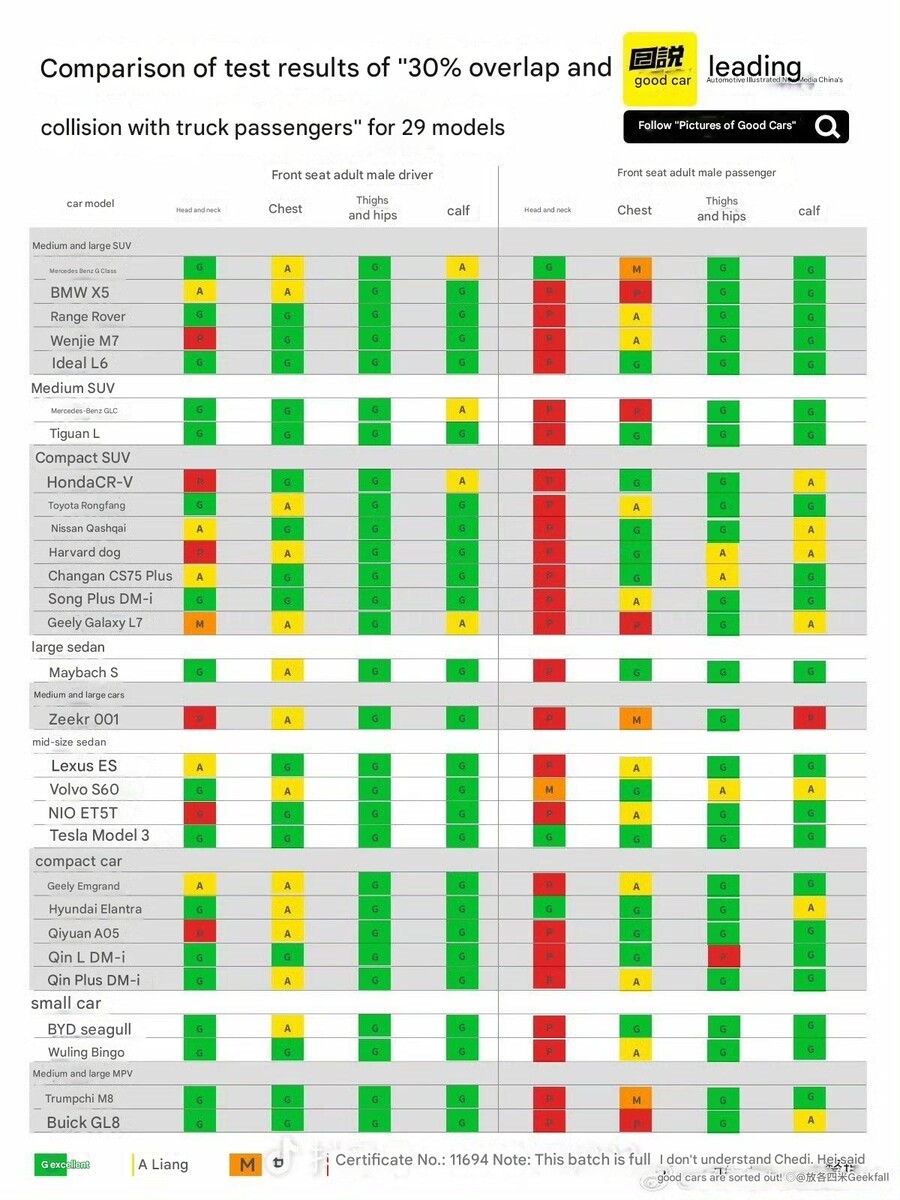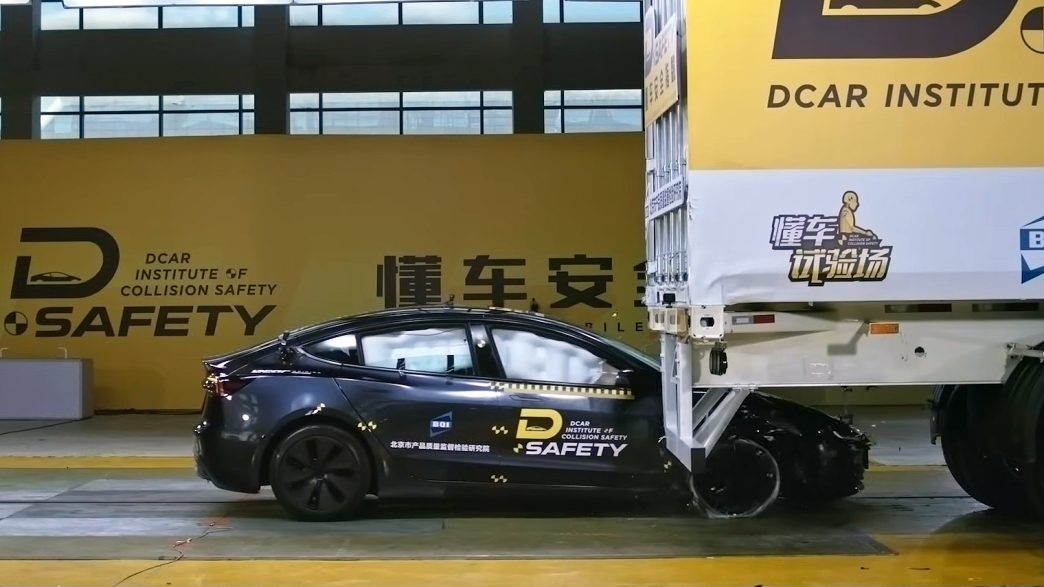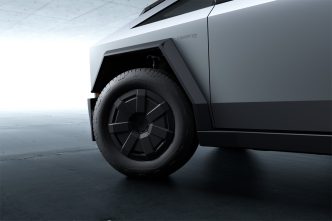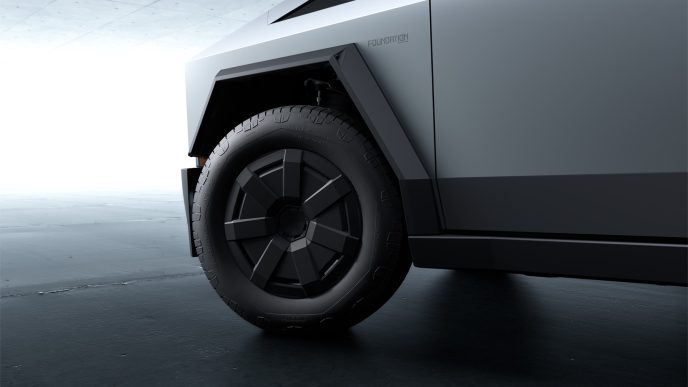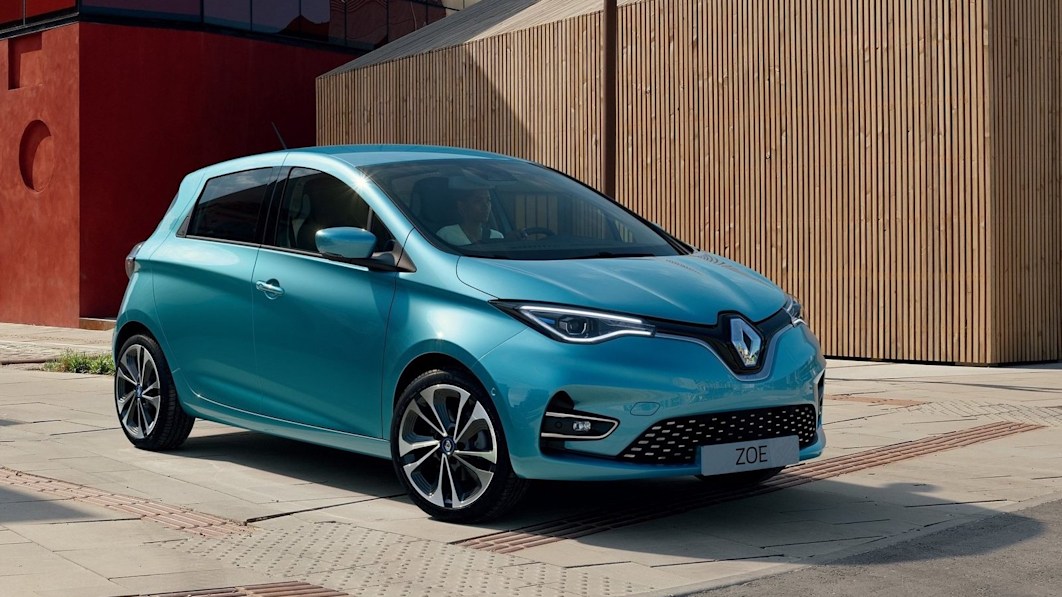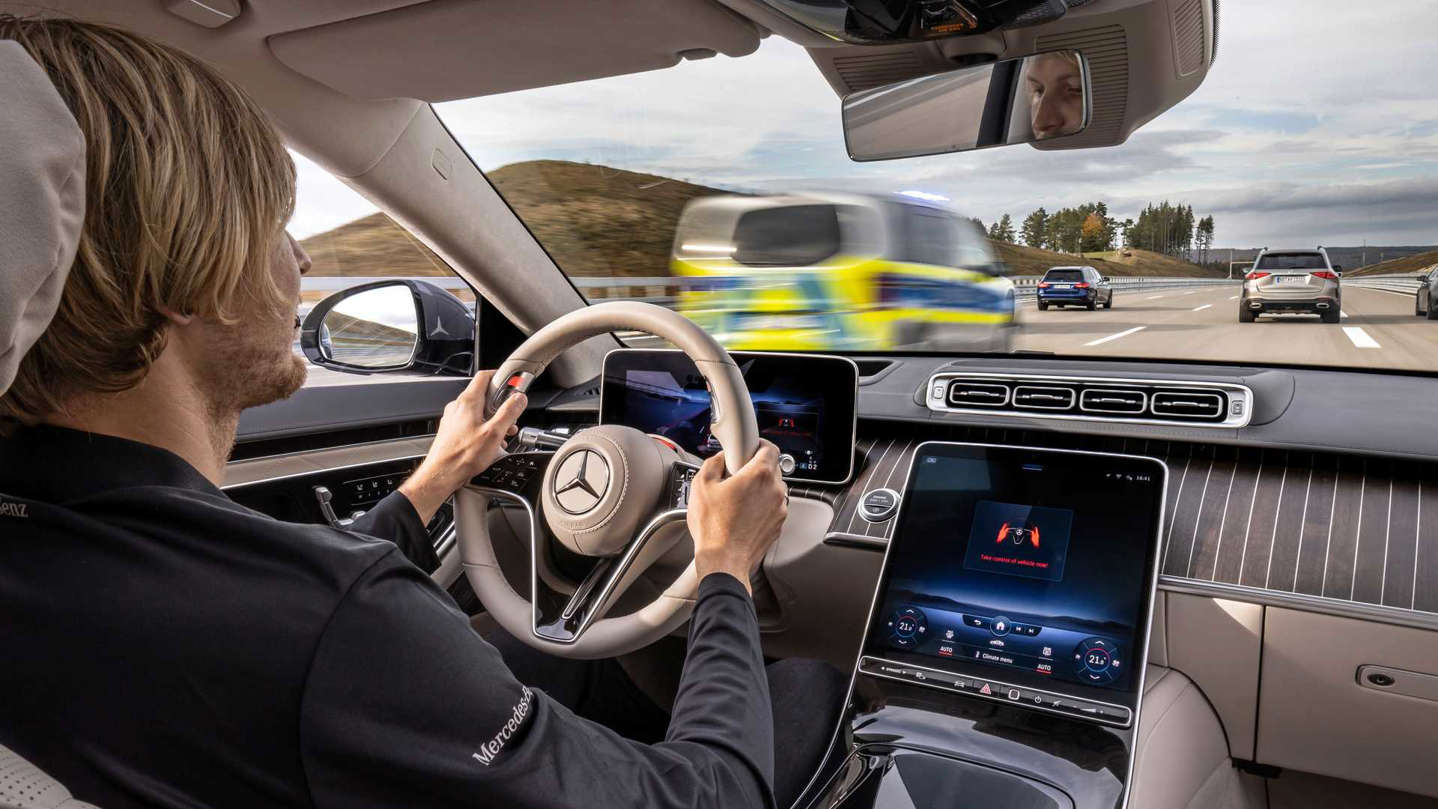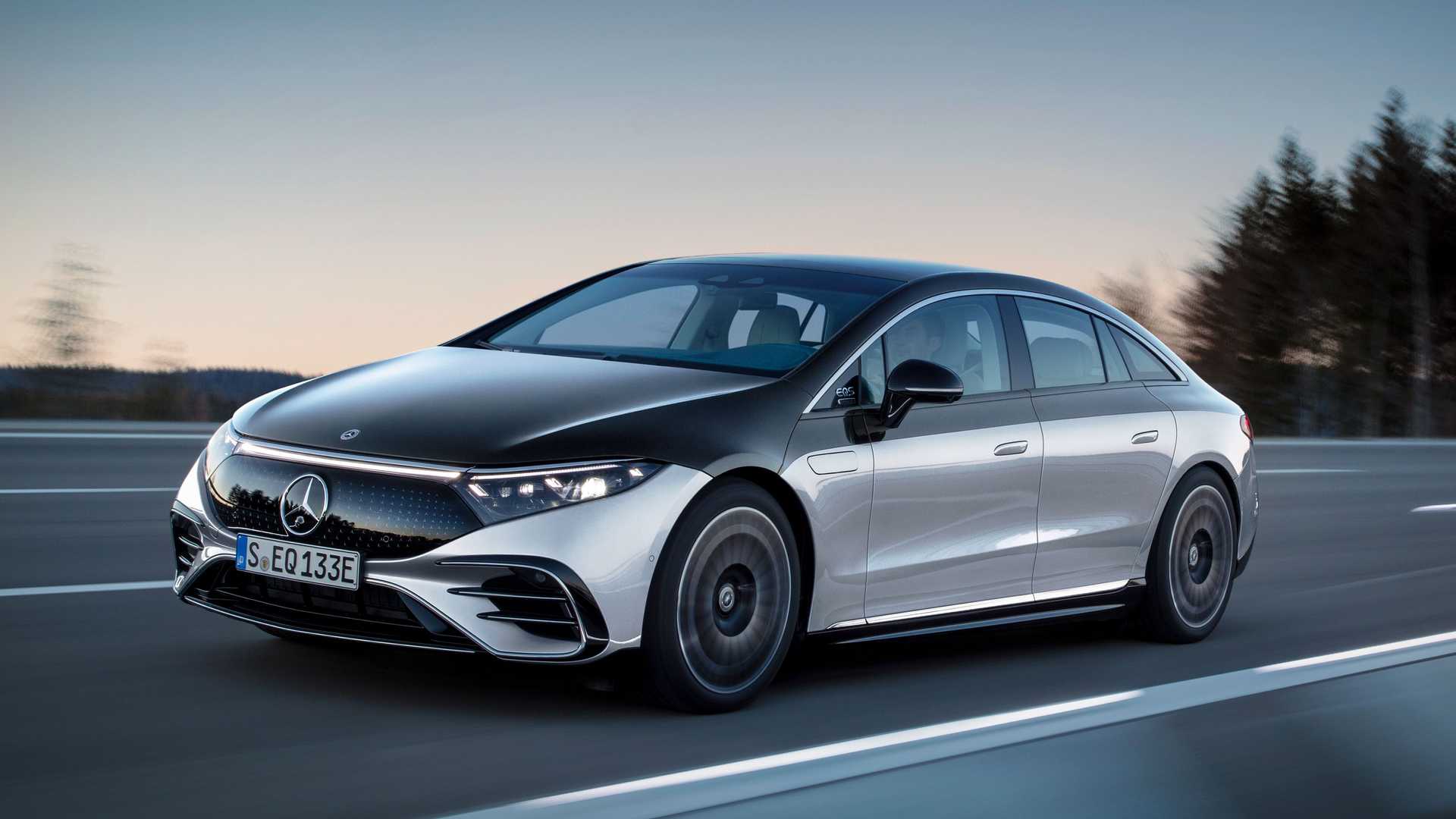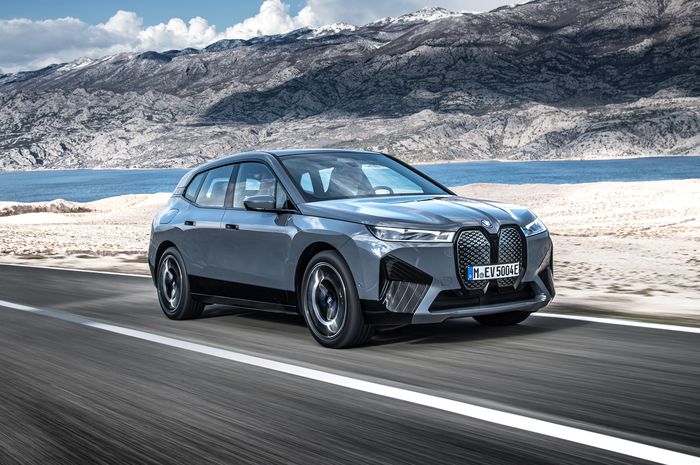Tesla’s Model 3 has once again demonstrated its superior safety features, becoming the only vehicle among 30 tested to excel in a rear-end truck collision scenario, one of the deadliest types of vehicular accidents. In a rigorous crash test administered by the Chinese DCAR Institute for Collision Safety, the Model 3 was the standout performer, with its design and engineering allowing it to pass all the critical safety benchmarks.
The crash test, known as the “trailer drill,” simulates the deadly scenario of a car rear-ending a truck while sliding underneath it. In this high-stakes test, the Model 3 showed remarkable resilience. While some of the other vehicles tested deformed severely, with damage extending as far as the C-pillars, the Model 3 only experienced slight deformation, with the impact barely reaching the A-pillar before the vehicle bounced back.
Tesla’s success in this test can be attributed to its carefully engineered chassis and low center of gravity, which is a hallmark of electric vehicle design. The heavy battery pack placed at the bottom of the car contributes to better stability and helps in energy absorption during a crash. As Tesla’s Chief Engineer Lars Moravy explains, the Model 3’s chassis is designed to flex structurally, gradually absorbing kinetic energy during a collision and ensuring that the forces don’t reach the cabin, where the driver and passengers are located.
Tesla Model 3’s safety vs other Chinese EV rivals. pic.twitter.com/xYFGcKXnjm
— Nic Cruz Patane (@niccruzpatane) November 6, 2024
The Model 3’s performance in this crash test reinforces the high safety standards that Tesla vehicles are known for. This achievement stands out in a group that includes vehicles priced up to $230,000. Remarkably, Xiaomi’s first electric vehicle, the SU7, also performed well in the test, deflecting energy away from the crash test dummies, though it was noted that panoramic glass roofs might not be the best feature in such situations.
Ultimately, both the Model 3 and SU7’s performance in the trailer crash test suggest that the passengers of these vehicles would likely have survived one of the most hazardous accident scenarios, providing further validation of their safety credentials. The Tesla Model 3 continues to set the bar for safety in electric vehicles, proving that innovation in engineering can directly translate to enhanced protection for occupants in real-world crash situations.
